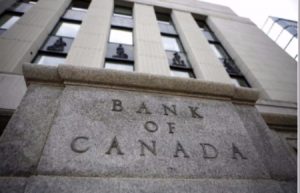Construction Mortgage Part 1 – Serviced vs Unserviced Lots
 On several occasions we have had people ask us at Dominion Lending Centres about construction mortgages. Every lender has their own guidelines and rules when it comes to construction mortgages. That’s because there are many details involved in the process of construction, let alone the mortgage that actually funds it! Below is part 1 of 2 of what a construction mortgage entails and what you need to know when tackling this complex mortgage.
On several occasions we have had people ask us at Dominion Lending Centres about construction mortgages. Every lender has their own guidelines and rules when it comes to construction mortgages. That’s because there are many details involved in the process of construction, let alone the mortgage that actually funds it! Below is part 1 of 2 of what a construction mortgage entails and what you need to know when tackling this complex mortgage.
Construction Mortgages almost always start with raw land
Raw land usually comes in 2 forms: service lots and un-serviced lots*
Serviced Lots are defined as having:
- Portable water-water that is safe enough for drinking and food preparation
- Septic/sewer services-city connected sewers or a septic field
- Access-a driveway, as rough or refined as it is
- Hydro-connected to power
- Natural gas (if applicable)
- Need 25% to 35% down
Un-serviced Lots are defined as having:
- Portable water-needs to be available
- Septic/sewer services-not applicable
- Access-(other) or not typical such as water access
- Hydro-not applicable
- Natural Gas-not applicable
- No Agricultural Land Reserve**
- Need 35% to 50% down
*guidelines depend on the lender
**land that is reserved for agricultural activity (ie. Farms)
Rates and terms of purchasing raw land
Serviced Lots usually have:
- Maximum Mortgage Amount, depending on the lender
- Maximum Mortgage Amortization, depending on the lender
- Rates are usually a little higher than discounted rates (ie best discounted fixed rate plus 1%), but not always
- Fees – usually a lender/broker fee, but not always
- Terms – usually 1 thru 5 years
Un-Serviced Lots are defined as having
- Maximum Mortgage Amount, depending on the lender
- Maximum Mortgage Amortization, lesser maximum amortization compared to serviced lots
- Rates are usually a little higher than discounted rates and higher than serviced lots (ie best discounted fixed rate plus 2%), but not always
- Fees – usually a lender/broker fee and usually higher than serviced lots, but not always
- Terms – usually 1 thru 5 years
How do you qualify?
- You need to complete a mortgage application
- You need to provide credit bureaus and income documents showing that you qualify for the amount of money you wish to borrow.
- You need to provide a detailed construction budget.
- You need to provide a title search (through your mortgage broker or lawyer)
- You need to submit a copy of the purchase agreement, including all addendums and amendments.
- Builder information and resume (if requested) and project contract
- Full set of legible construction drawings scaled to legal size paper or smaller
- HPO registration (Home Owner Protection forms or registration of new home)
- You base the amount to be borrowed on the appraisal based on a completed project
You may need to also provide….
- Copy of all construction contracts
- Corporate financial statements (if applicable)
- You need to submit a detailed summary of the deal, including how you are expecting to move out of the higher interest rate construction mortgage into a “normal” mortgage, depending on the lender
- Copy of purchase agreement for the land purchase
These are the first steps to setting up and understanding a construction mortgage. There are unique traits to this type of mortgage as with any other mortgage. Remember, you should always consider calling a mortgage broker to help walk you through this complex process!
Stay tuned for Part 2 nwhich will cover the budget, the loan, and key take points.
– by Geoff Lee
 If you’re on the hunt for your first home and want to have a smooth and successful home purchasing experience avoid these common first-time homebuying mistakes.
If you’re on the hunt for your first home and want to have a smooth and successful home purchasing experience avoid these common first-time homebuying mistakes.
 Documents, documents and more documents. Yes that’s right you will need to provide your Dominion Lending Centres mortgage broker with as many documents that we request upfront as possible. Why? Because the more supporting documentation you have available will help us as brokers to find you your best mortgage options. If you don’t have everything on hand e-mail a PDF of what you have and start digging up the rest as soon as possible.
Documents, documents and more documents. Yes that’s right you will need to provide your Dominion Lending Centres mortgage broker with as many documents that we request upfront as possible. Why? Because the more supporting documentation you have available will help us as brokers to find you your best mortgage options. If you don’t have everything on hand e-mail a PDF of what you have and start digging up the rest as soon as possible.




